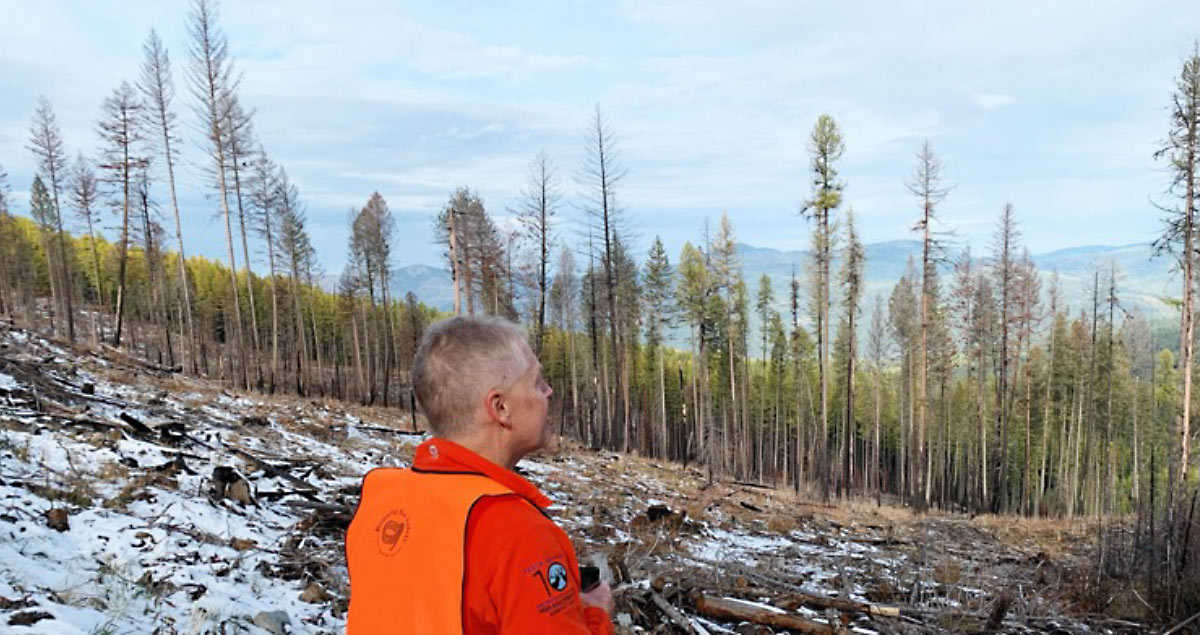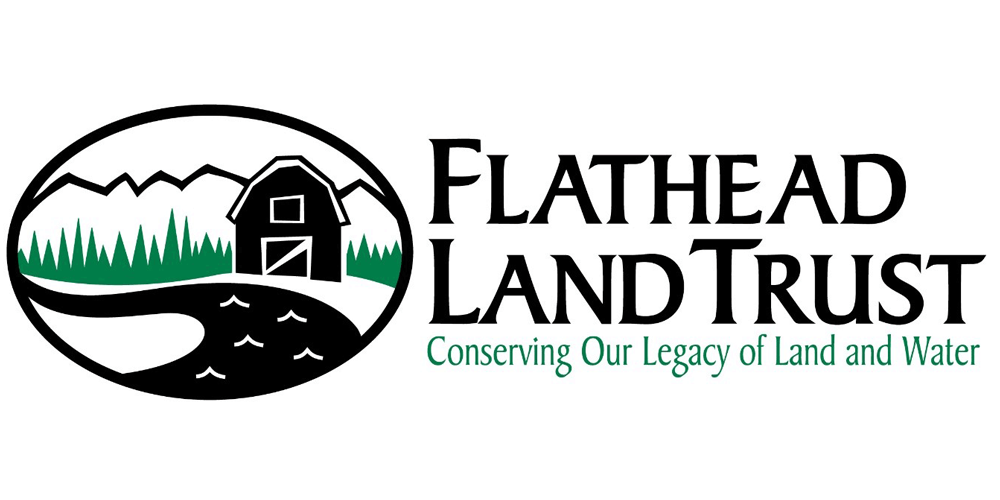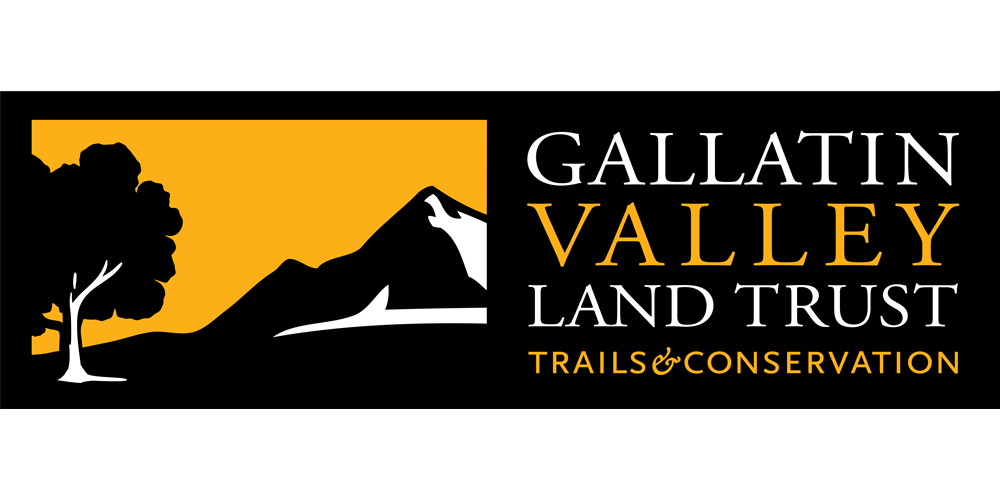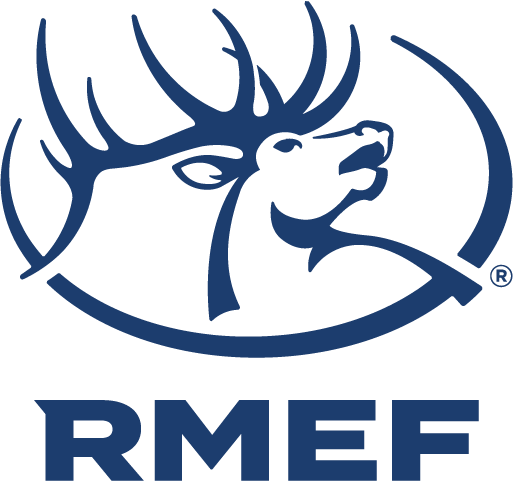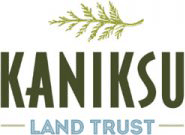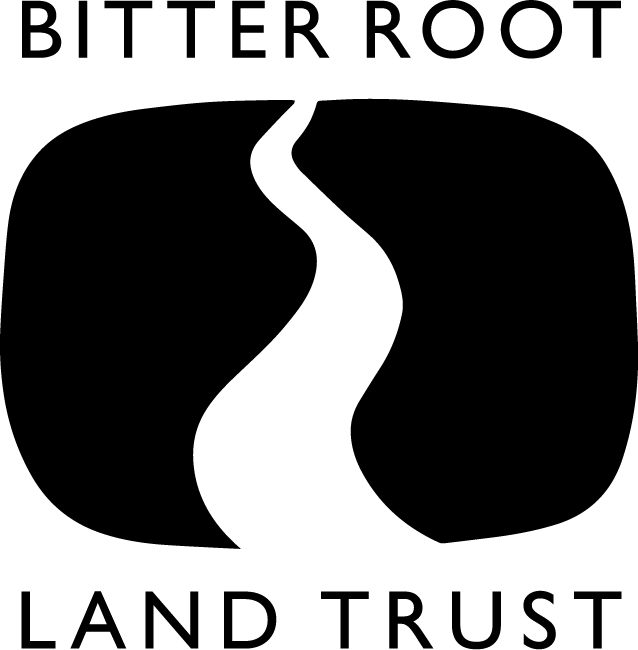How a land trust, a timber company, and a wildlife agency teamed up to save working and hunting lands for the entire northwest community.
Jim Williams raised his two kids hunting deer and elk from a swath of open landscapes in northwest Montana, a patchwork of timberland surrounding the Thompson Chain of Lakes between Kalispell and Libby. Each autumn, Williams, who calls Whitefish home and has lived in Montana for nearly 40 years, drives with his kids or other hunting partners for over an hour to a gated trailhead at the drainage of his choice. It’s been informal access here for decades, usually a handshake agreement between landowners and people like Williams. From wherever he parks his old truck, he hikes several miles to look for wildlife, hoping to put food in the freezer. More often than not, he doesn’t shoot any game. But he always enjoys the mountain views, sunshine, and fresh air. There’s a reason he loves this place: west of Glacier National Park and east of the Cabinet-Yaak Wilderness. It’s a unique and biodiverse region, home to some of the state’s best wildlife habitat and landscape connectivity: prime hunting grounds.
“We’re so fortunate in Montana to have almost all of our native ungulate species still here and in huntable numbers,” said Williams.
He would know, although he’s a former longtime wildlife biologist and regional director of Montana Fish, Wildlife and Parks.
But there’s nothing to keep this long-cherished public access that Williams and the scores of other people who hunt this land have enjoyed openly. This region is under immediate and unprecedented threat. The timber industry that primarily owns these lands is facing challenging economic times. Machines allow a single operator to cut down a tree, limb the branches, and load it all in a truck in one swift move—a process that previously required a handful or more workers. Then, the COVID-19 pandemic hit the industry even harder. Even as the cost of lumber soared, employees in paper mills were reduced by 15,000 people and in logging by 7,900. Since the 1980s, Montana’s timber harvest and log supply has dropped to just one-third of what it was.
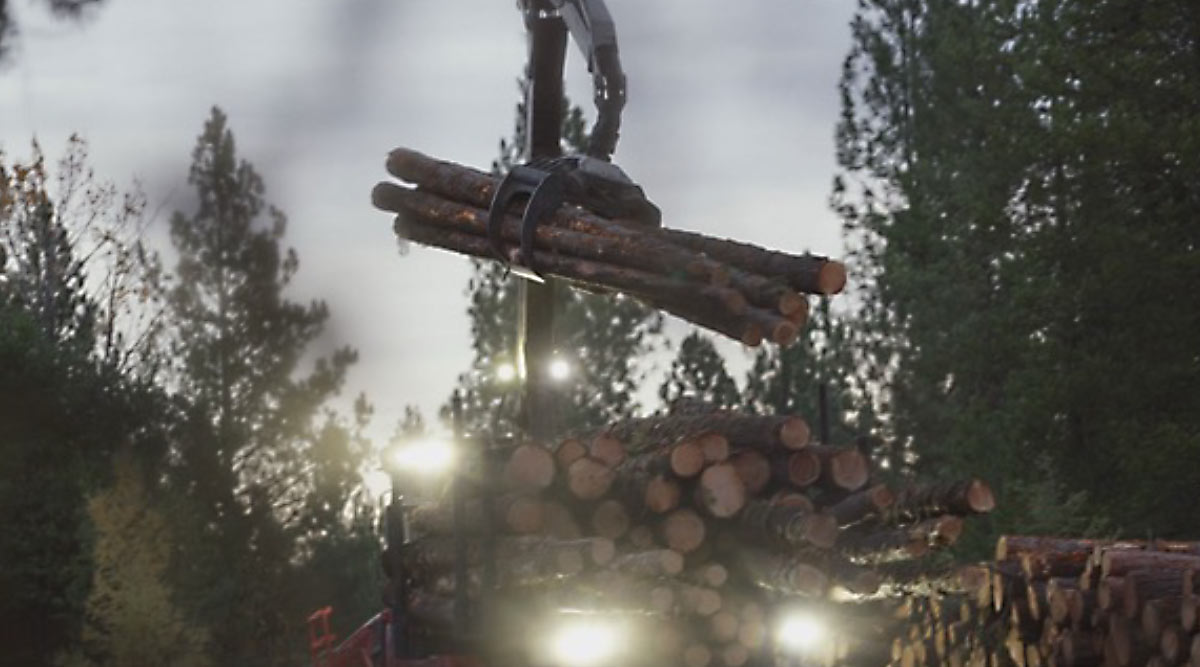
In addition, like much of Montana, the rise of remote work and the pandemic migration brought a significant influx of people to Flathead County. Since the spring of 2020, nearly 10,000 people have moved to the Flathead; Montana has added almost 50,000 people, a massive jump for a state that only recently numbered under one million. As a result, real estate prices have increased rapidly as demand has increased. Undeveloped lands – including working timber lands – have made way for subdivisions in what feels like a constant churn of new land ownership. It’s a perfect storm of conditions poised to irrevocably wipe out these working lands and the recreational uses around the Thompson Chain of Lakes that people here have enjoyed for generations.
“The pressure to develop and subdivide working lands and wildlife habitats has skyrocketed,” said Williams. “If these areas are lost to residential subdivisions, it will not only fragment the land but erode the access we all enjoy, which is a cornerstone of the Montana way of life.”
The threat has spurred what’s likely to go down as one of modern Montana’s greatest conservation success stories—and spurred a remarkable partnership to save this landscape and the Montana values it nourishes. Trust for Public Land (TPL), a land trust that strives for equal access for all people to enjoy public lands, Green Diamond Resource Company, the largest timberland owner in Montana, and Montana Fish, Wildlife and Parks (FWP) have been working toward protecting this landscape under conservation easement since Green Diamond took ownership. Called the Montana Great Outdoors Easement and spanning 86,000 acres across Flathead, Lincoln, and Sanders counties, it would ensure sustainable timber management, protect forestry and wood-product jobs, protect wildlife habitat and landscape connectivity, and continue providing public recreation access. It’s a crucial space for protecting wildlife migration; the easement abuts some of the wealthiest wildlife habitats in the northwest, including Thompson Chain of Lakes State Park, the 142,000-acre Thompson-Fisher Conservation Easement, and the 100,000-acre U.S. Fish and Wildlife Service’s Lost Trail Conservation Area, as well as Kootenai National Forest and Montana Department of Natural Resources and Conservation lands. It would protect around 300,000 acres, although not all of them will be contiguous.
On August 23, 2024, the state’s Fish & Wildlife Commission unanimously approved Phase 1 of the Montana Great Outdoors Conservation Easement. According to Bill Schenk, Montana FWP’s Land and Water Program manager, FWP broke up the easement into two phases because of the uncertainty of funding limitations and considering existing conservation easements in the area.
Some might call a partnership between a land trust and a timber company unlikely. But in Montana, protecting working landscapes that provide hunting opportunities and jobs that reflect local values is a classic conservation definition.
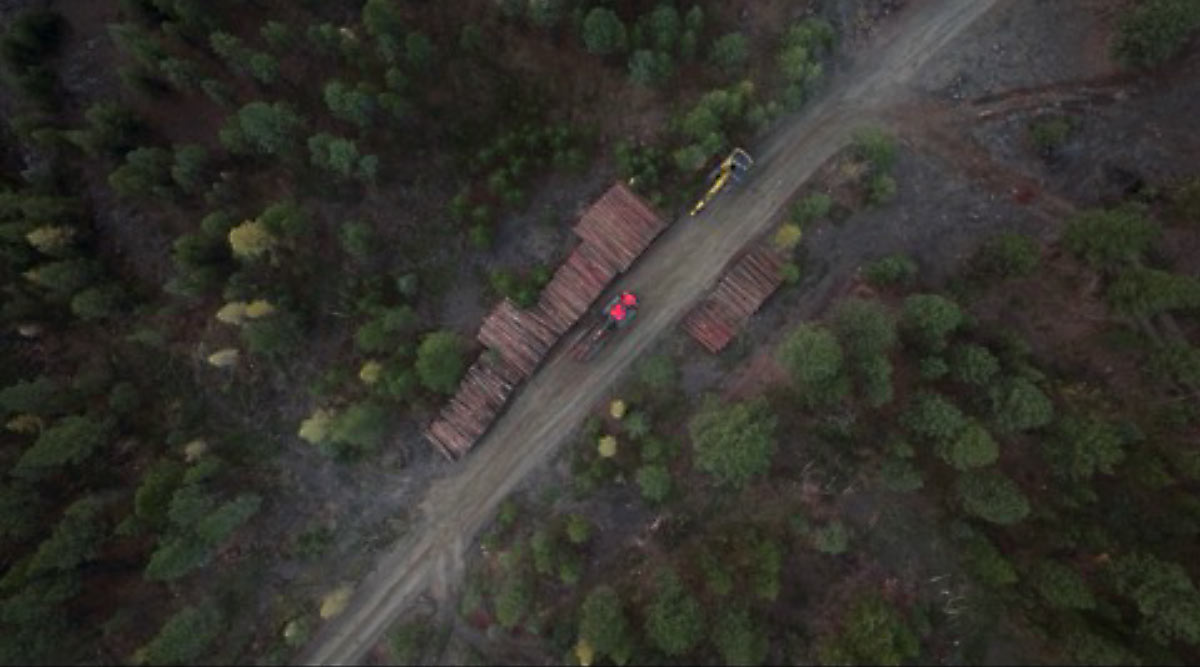
“It’s just great to have a committed landowner committed to sustainable forestry management for the long haul and interested in keeping public recreation access opportunities alive on their lands.”
Dick Dolan, Northern Rockies Director of Trust for Public Land
The Beginnings of Voluntary Protection
When Southern Pine acquired the land, it began exploring conservation options, including developing a relationship with TPL. In purchasing the land from Southern Pine, Green Diamond inherited specific ongoing conservation projects and existing relationships, including those with TPL. At the time, Green Diamond assured the public that it would continue managing the working timberlands and ensure public access as part of their long-term plans for a conservation easement – which has become the Montana Great Outdoors Easement.
“This project is not the first of its kind but is refreshing in the sense that we have been partnering with logging companies for 25 years in northwestern Montana,” said Dick Dolan, Northern Rockies Director of Trust for Public Land. He points to the Montana Great Outdoors Easement as part of a much larger effort by TPL to protect one million acres of working lands across Montana before they’re sold off to the highest bidder for development or land costs become too extravagant to prohibit conservation purchases.
“It’s just great to have a committed landowner committed to sustainable forestry management for the long haul and interested in keeping public recreation access opportunities alive on their lands.”
Green Diamond is a sixth-generation, family-owned company that has operated for 134 years. It owns 1.6 million acres of forestland in four western states, including 291,000 acres in northwestern Montana. Green Diamond intends to maintain nearly all those Montana acres under the Montana Great Outdoors Easement. “We aim to support working timberlands by discouraging fragmentation, poorly planned development, rural sprawl and increased Wildland Urban Interface areas,” wrote Jason Callahan, policy and communications manager for Green Diamond Resources, in an email. “We support rural economies by securing resource lands for long-term resource production and provide an alternative for landowners to continue managing their lands as working forests rather than selling them off for their highest bid use, which is often development.”
Callahan continued that Green Diamond and TPL see eye to eye on shared values, like the value of conserving working forests and the renewable resources they can provide and the benefits to the public of having open space and maintaining a working land base to support rural natural resource economies.
“These habitats that TPL is working on are corporately owned timberlands, which are critical to keeping working lands that still contribute to the counties and provide jobs,” said Williams.
In the summer of northwestern Montana, Williams says, people hike and climb mountains, float rivers and lakes, and gather huckleberries; as the nights wax longer and the morning temperatures become chillier, it reminds people to collect firewood before hunting season. It is all part of the natural transition: huckleberries to firewood to hunting, “an annual cycle of mountain life here,” said Williams. “It connects us in today’s modern hustle and bustle world to the ancient dance of hunting and gathering that purchasing food in the grocery store can’t provide. The ability to legally hunt deer and elk is a privilege. We must step up to maintain that opportunity by getting involved in projects like the Montana Great Outdoors to keep these lands open for wildlife and the public.”
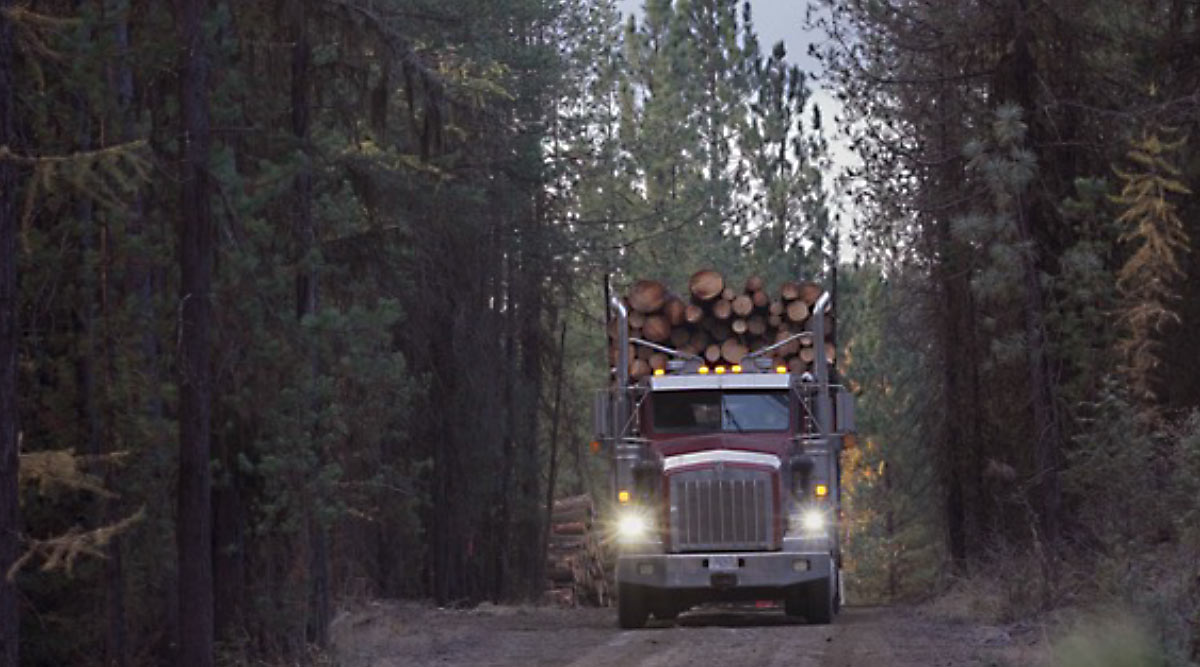
More and more people are moving to Montana because of the quality of life. People want public lands to recreate in. They want to raise their kids close to nature and take them fishing, hunting, hiking, and berry picking. For many, Montana is the “Treasure State” in the sense of cherishing its public lands and open space. This conservation success story is one of several that helps lower the anxiety of the state’s citizens worried about unchecked development.
These are the same reasons Williams chose to live, work, and raise his kids here. His daughter even became a junior hunter education instructor when she was younger. His kids sometimes tag along to go hunting but are now adulting in that busy stage in life. His children are grown and live independently but continue to eat wild game.
The Funds That Made It Possible
This project wouldn’t be possible without a mix of public and private funding, including the U.S. Forest Service, which pledged $20 million through its Forest Legacy Program. Other entities have stepped up, including TPL, which raised almost $4.2 million in private charity and Green Diamond has voluntarily donated the remaining balance of $13.9 million.
The State of Montana also plans to contribute $1.5 million through its Habitat Montana program, a state-administered fund to conserve Montana’s most critical and threatened wildlife habitat. With the help of the U.S. Forest Service Forest Legacy Program, the State has expanded its scope of habitat conservation to include high-priority forests that are threatened to be developed and lost forever—like the Montana Great Outdoors Easement.
The money is all in place to cover the cost of the $39.5 million easement sale, but one obstacle has arisen. WRH Nevada Properties, supported by the Gallatin Gateway-based Citizens for Balanced Use, filed a last-minute lawsuit on August 7 to halt the easement, claiming it might impact the future development of their subsurface mineral rights.
However, on October 8th, a Lincoln County District Court judge dismissed their argument, ruling that “it is unreasonable to interpret the plain language of the Proposed Easement as interfering with WRH Nevada’s mineral rights.” WRH Nevada Properties has already appealed this ruling to the Montana Supreme Court.
On October 21, the Montana Great Outdoors Easement went before the Land Board, which comprises the governor, attorney general, secretary of state, superintendent of public instruction, and state auditor, and makes decisions about what happens to state lands, including easements. The Land Board approved the purchase with a vote of three to two, with the condition that new language be crafted in the easement to clarify further that there will be no impacts on WRH’s mineral rights. Montana Fish Wildlife and Parks and other partners have said it will be a “top priority” to craft language that will satisfy the Land Board. It’s expected the Land Board will provide final authorization before the end of 2024.
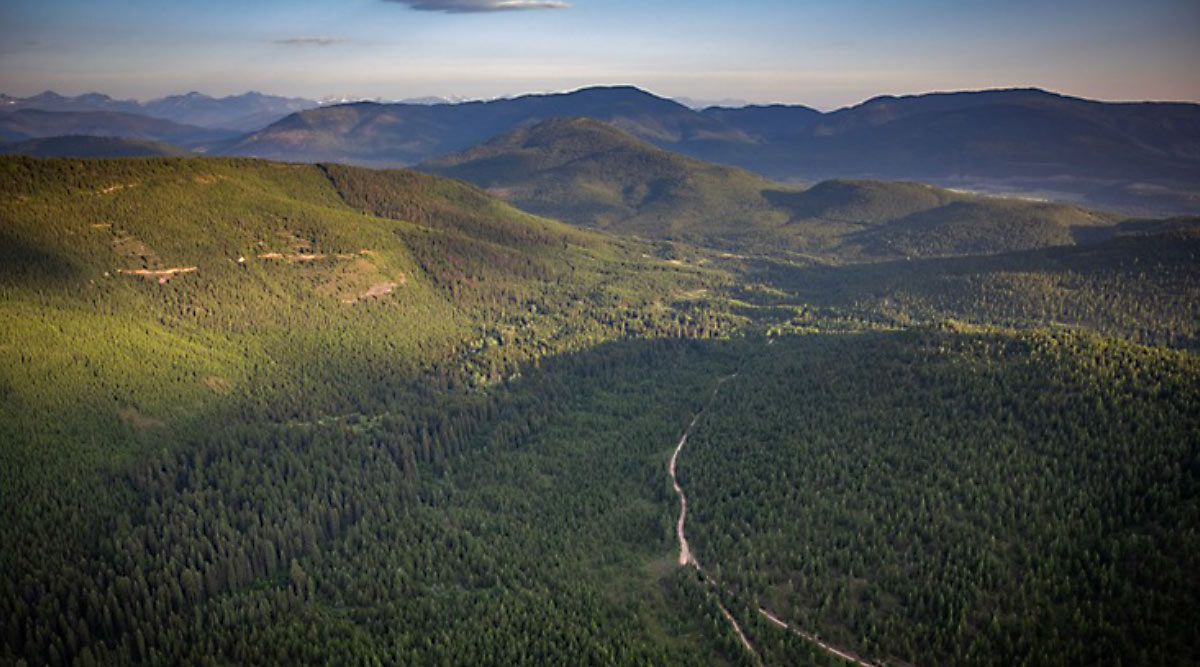
Williams worked for the state wildlife agency for over thirty years. He cannot recall how often somebody told him they lived and worked here to raise their children in a healthy environment and for Montana’s hunting and fishing opportunities, regardless of personal politics. Some people even told him they work all year for the five-week hunting season in the fall. “It was their scenery tax to make lower wages and endure long winters for the opportunity to legally pursue deer, elk and antelope in the fall.”
Williams and others in the community surrounding the easement are paying close attention to the outcome of the Montana Great Outdoors Project. This land is the community’s supermarket, playground, garden, gym, orchard and church. People all need a place like this that is wild and a place to unwind from the toils of this world. “It’s such a unique project that highlights Montanan’s ability to collectively shelve their political beliefs and ideology and come together to fund and deliver permanent conservation,” said Williams.
